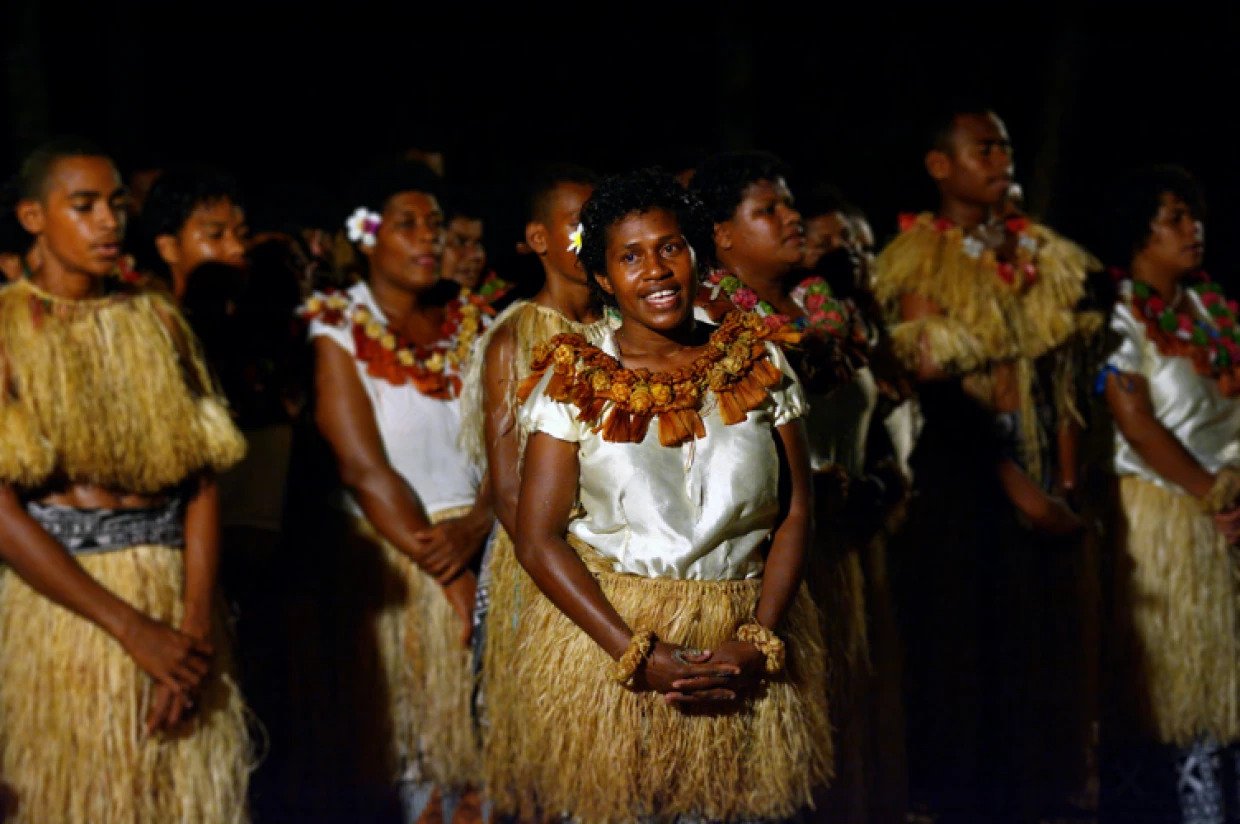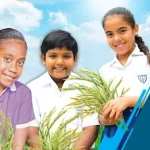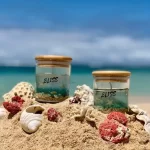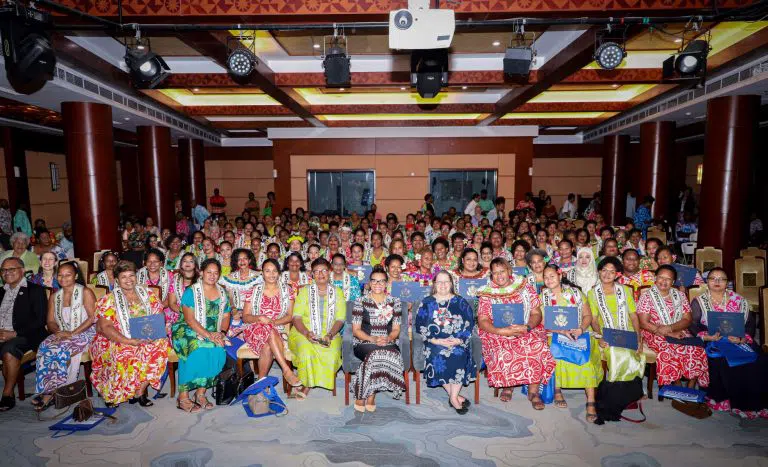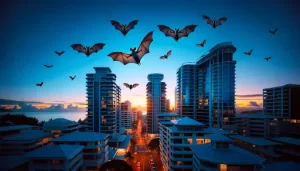Bula! This oft-used greeting in Fiji translates to “life,” with its longer use ni sa bula vinakatranslating to “wishing you happiness and good health.”This warm well-wishing lies at the heart of Fiji culture, which is just as vibrant and inviting as Fiji’s white-sand beaches, tropical scents, and lush green forests.
Below we’ve highlighted just a few of the island’s traditions that make Fiji culture so inviting and full of life!
Fijian Art
Masi (Tapa Cloth)

A popular art form in Fiji is the creation of the Fijian masi, also known as tapa cloth. Masi is made from inner white bark of the paper mulberry. To create masi, Fijians strip the bark, soak it in water, and then beat and felt the cloth for hours.
Once the cloth is prepared, designs are added using red, brown, or black vegetable dyes. Masi patterns commonly include repeated geometric motifs, created either by freehand or with stencils. Traditionally, these stencils were made from banana leaves or other large-leaved plants.
Masi can be used as a ceremonial dress or wall décor or as a table mat or blanket.
Mat and Basket Weaving
The traditional Fijian art of mat and basket weaving is alive and well on the islands. It is not uncommon to see people weaving hats, mats, and other materials from durable coconut palm fronds.

Voi voi (known also as pandanus leaves) is another popular weaving material—though preparing the leaves can take longer than the actual weaving! The voi voi leaves must be stripped of their thorns, boiled, and then dried in the sun. Sometimes, the material is blackened through a process of burying the leaves in mud for several days and then reboiling them.
Similar to masi, these woven projects can be a form of décor, or they can work more practically as baskets, floor coverings, or sleeping mats. But more often than not, the weavings have both artistic and practical purposes—an everyday reminder of Fijian heritage.
Carving
Traditionally, weaving and creating masi were done by women. The men’s crafts centered more on wood carving, especially in crafting canoes.

One of the most recognizable and impressive traditional Fijian canoes was the drua, sometimes referred to as the sacred canoe. Drua in Fijian means “double,” and the canoe gets its name from the double-hulled, twin-like construction. The drua functioned mainly as a war canoe and was known for its impressive size and speed—reaching up to 25 knots and varying from 100 to 118 feet in length.
Unfortunately, the arts of canoe crafting and wood carving are declining arts. However, some Fijians seek to revive these arts, embracing their past heritage.
Traditional Fijian Dancing
Dancing is an important part of Fiji culture. The most popular performance, called a meke, involves both dancers and singers or percussionists.

These storytelling musical displays preserve the legends and tales passed down over the years. The performances capture aspects of traditional Fijian life, from elegant fan performances to rousing war dances. Typically, men wear the clothes of a warrior while the women wear dresses with traditional ornate patterns.
When performed in villages, meke dancers are afterwards given gifts of appreciation from the audience.
Fijian Food
Fijian food is an important part to Fiji’s culture because it’s an important part of the island itself—much of the authentic, traditional dishes prepared in Fiji are based on natural, local resources. This means that most traditional meals are made with seafood, vegetables, roots, and tropical fruit like coconut.
The traditional way of cooking Fijian food includes wrapping the meals in banana leaves and palm fronds and then cooking them in an underground, earth oven heated by hot stones. This earth oven is called a lovo.

Traditional Fijian food includes the following:
- Kokoda. Similar to sushi, this dish consists mainly of raw fish. It’s mixed with coconut milk broth and raw vegetables.
- Cooked Cassava and Taro Root. These roots are cooked and eaten as a side dish. The cooked roots are similar to potatoes in texture and are a staple in many Pacific island cultures.
- Palusami. Palusami, which is also common in Samoa, is made up of crushed taro leaves. There are no spices involved. This simple dish is served with coconut cream or pieces of meat, commonly lamb or corned beef. The taste is comparable to cooked spinach.
- Cooked fish. The Fiji cuisine wouldn’t be complete without this important island staple. You can find a variety of fish cooked in all sorts of ways, including smoked, grilled, and steamed.
Indian-Fijian food is also an important aspect to Fiji’s food heritage. For this reason, curry is a common staple of Fijian meals, including the popular to-go chicken curry roti.
Religion in Fiji
The Fiji culture is renowned for being warm and welcoming, so it’s no surprise that the islands are home to people of many different religions, from Christianity to Sikh.
Fijians with Asian ancestry, such as Fijian Indians, tend toward Islam, Hinduism, and Sikh, whereas many indigenous Fijians identify as Christian. This is because during the 19th century, when Britain colonized Fiji, many Fijian village chiefs were converted to Christianity. Prior to conversion, shamanism and animism were the predominant religious beliefs of indigenous Fijians.

Fijian Community
Perhaps the biggest hallmark of Fiji culture is the sense of community. It’s not unusual for strangers to wave and smile as you pass by.
If there was a word to describe the Fijian people, it would be family. In this beautiful culture, it takes a village to raise a child. Communities are made up of close friends and family members and the islands even report a low crime rate.

If you have Fijian heritage, it’s something to be proud of. The culture and lifestyle of your ancestors or current family members continue to lift communities worldwide. Continue the legacy by sharing what your heritage means to you in FamilySearch Memories.

Source: Family Search

